Thrayam was an ode to the three elements of dance Nritta, Nritya & Naatya
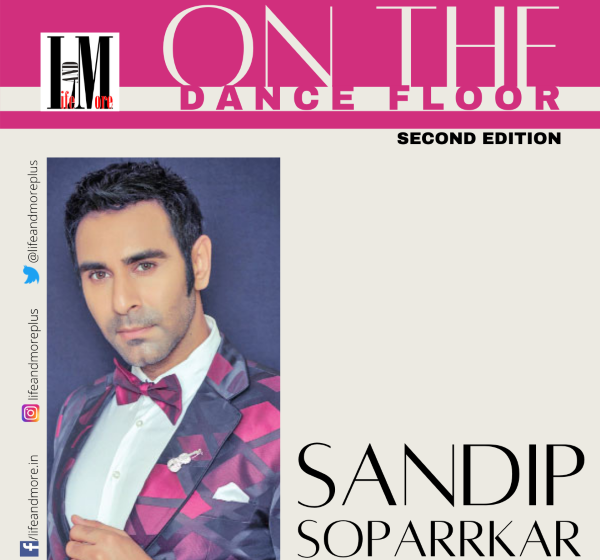
National centre of Performing arts organised a great evening gathering the poetry of the number three, through the three elements of dance – Nritta, Nritya and Naatya. The evening was curated and produced by Kalashri Dr Lata Surendra. Post the show I spoke with the renowned, Bharatanatyam exponent, mentor, choreographer, researcher and writer Dr Surendra. Excerpts from an interview:
What made you think of the idea of Ode to three – Thrayam?
Dance when presented as an experience is amazing in its ability to draw the viewer through the power of intention and suggestion to define a theme and bring it to life. When presented with depth, classical dance becomes the umbilical cord which connects us, not only with our inner selves but also the world for which dance should transform to a one to one experience. I wanted to awaken people to the Tri- particle nature of all existence as heaven, earth, water and in the human as body, spirit and soul. So I brought an ode unto the poetry of Three, through the bridging metaphor – Dance!
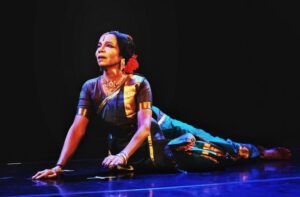
There were many artists who performed, tell me about each of their themes and how it was brought out?
Legendary Guru Vyjayanthi Kashi, the reputed Kuchipudi exponent and a celebrated performer and choreographer who is also the artistic director of Shambhavi School of Dance, explored three through Triguna. Three attributes of Sattva, Rajas and Tamas through the mystery that is the woman – Sharmishte. Who is she? She raised questions to explore with purposive intent and steered the way for the conclusions –“Wise is she who is Sattvik, petty is she as Tamasik and rich as in Rajasik”.
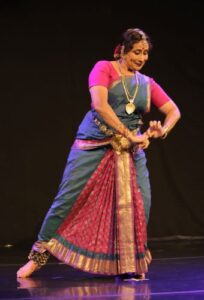
Smt Jhelum Paranjape renowned Odissi exponent, mentor, choreographer and founder of Smitalay presented the flow of the number three through the three identities of Narmada. Narmada the Goddess, the Mother and the River. An artist with a unique vision and a signature style that etched Odissi in every movement, she reached out with the eloquence of three varied aspects of river Narmada. Her independent thought process was reflected in her moving away from the traditional attire of Odissi to a unique and more contemporary aharya in white that gathered the kinesthetics of her chosen style beautifully endorsing that the Sattva soars beyond the tangible and visible.
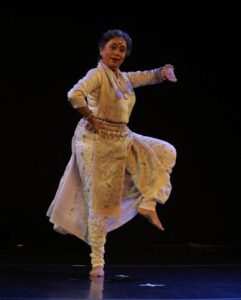
I too danced and explored three with two pieces choreographies. One was Vasuki – the snake coiled three times around the neck of Lord Shiva representing the three forms of time — past, present and future — that we transit through. It was an intricately choreographed piece set to Thisra Jathi Dhruva Thalam in 11 aksharas, which I dedicated to my mentor, the legendary Vidwan Kalaimamani Guru T S Kadirvelu Pillai. The second was – through the effulgent form of Tribhangi Krishna, highlighting the truth of Radhamayi Krishna, as Kridhna leaves Vrindavan to reach out to the true purpose of his incarnation.
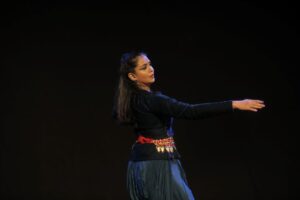
We also had an imaginative choreographer and an exemplary Kathak exponent and teacher Sanjukta Wagh who explored Kaali – the great mother who is an embodiment of time itself her magnificence, her ferocity and her deep love and compassion for all beings. Inspired by her grand Guru Madhurita Sarang, the song was a traditional kathak piece by Mahavirji rearranged and choreographed by her. Her fellow musicians Hitesh Dhutia on the guitars, Vinayak Netke on percussions and Radhika Sood Nayak on vocals, with Priya Sarukkai Chhabria’s evocative poem on the mother goddess and her symbolism tied up the soul connect and the relationship between the divine and blessed, the poet and muse, the artist and the audience.
The climax was the imaginative choreography of Ms Manisha Jeet who defined the journey of the genderless intangible through three genders सा, तत्, सः . Her team enthralled the audience with the magic of सा-Stree, तत्- Shikhandi & सः- Kaal Bhairav. The energised execution of the artistes with beautifully coordinated movements and uttered vachika defined the finale with aplomb.
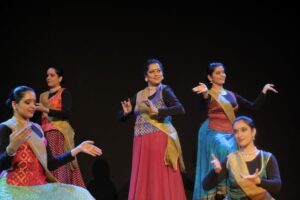
At the end of the show there was audience interaction too, how did that come around?
Well, that was not planned at all, it came out totally spontaneously by me. What I did was very simple I only had the audience clap to thisra in three layas and changing gatis as a tribute to Three. I never realised that, this instinctively done act will have the audience gasp for more. All I can say is that crowd was very receptive and intelligent, it was a total pleasure performing for them.
How do you feel after a grand show which was so very well appreciated?
Post witnessing Thrayam show, ‘The Number Three’ would surely have transformed to more than just a number! In the tri- particle nature of the universe three would reign as the perfect number gathering the pulse of the universe through each of its symbolic definitions in the sacred symmetry that embodies all life.
Sandip Soparrkar holds a doctorate in world mythology folklore from Pacifica University USA, an honorary doctorate in performing arts from the National American University, He is a World Book Record holder, a well-known Ballroom dancer and a Bollywood choreographer who has been honored with three National Excellence awards, one National Achievement Award and Dada Saheb Phalke award by the Government of India. He can be contacted on sandipsoparrkar06@gmail.com


